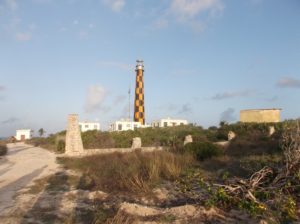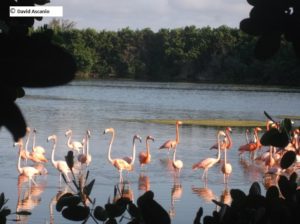Members of the East Quabbin Land Trust gathered for a breakfast meeting this morning at the EQLT headquarters on Ridge Road in Hardwick. After enjoying a delicious meal of French toast, pancakes, sausage, and fresh fruit, we settled in to hear a talk by Debra Taylor, who spoke about her experiences as a long-distance hiker.
After Ms Taylor retired from her job in Information Technology, she considered what she wanted to do next. She grew up in Wilton, New Hampshire and was familiar with backpacking, though not with long-distance hiking. But when she had an opportunity to hike the Camino, the pilgrimage route to Santiago de Compostela in Spain, she took it and completed the walk in 2008. This experience and her involvement with the “Wednesday Wanderers” whetted her appetite for long-distance hiking (over 500 miles is considered long-distance), and in 2012, she completed a through-hike of our own Appalachian Trail, the “green tunnel,” which runs 2000+ miles from Georgia to Maine. On this hike, she confirmed what she sensed was out there: a world-wide community of long-distance hikers, who, despite the obstacles to success in this type of endeavor, are committed to doing it. Remember, she said, that people need a support structure to undertake these treks: they need to be able to take six months out of their year to be on the trail, they need partners to keep the home fires burning, and they need to reach within themselves to find the discipline to prepare themselves and the stamina to carry through with the project. She herself was intrigued by the idea of pilgrimage, of the hike as a form of meditation.
Through her conversations with fellow hikers, Ms Taylor became interested in the idea of hiking the Pacific Crest Trail, at 2,650 miles the longest continuously marked, mostly wilderness trail in the United States. The trail was the brainchild of Clinton Clarke, who began work on it in the 1930s. Groups worked on it sporadically for the next few decades, and in 1993, the PCT was declared officially finished. After a year of planning, Ms Taylor began her hike at the California-Mexico border on April 17, 2015. Through that spring and summer she hiked, most often with partners but sometimes solo. We followed her progress through a series of slides she showed: through the spectacular but often treacherous landscapes of California, Oregon, and Washington, all the way to the Canadian border.
Along with entertaining us with trail trivia and candid snapshots of her fellow hikers, Ms Taylor offered sage practical advice on how to succeed at this type of undertaking, which requires a fair amount of logistical and management skills. Unlike the hikers on the AT, some of whom hike ultralight, hikers on the PCT are not able to resupply at short intervals; instead, each hiker must carry a multi-day supply of food and water, especially water. Ms Taylor wanted nutritious meals (Snickers bars do not qualify), so she created her own meal packets. She also used a trail guide to determine her resupply points; then she put together drop boxes of food supplies (and at times, of equipment), which she shipped to herself, hoping that her calculations as to when she would reach a certain point would be accurate. From her previous experience, she knew how many miles would be reasonable for her to hike in a day, but there is always weather and terrain to be considered (in the end, she averaged 18 miles per day on the PCT). For communications and safety, she carried a tracking device; she also had a smart phone but often couldn’t use it because there simply wasn’t cell coverage out in the wilderness. She usually carried about a gallon of water, a bear canister to keep food away from bears (some state or federal regulations require it), her tent, paper maps, and a cooking stove. When hiking long-distance, weight is a huge consideration: she tried to keep her pack weight down to 22-24 pounds (with a base weight of 13 pounds); she estimated that the maximum weight she carried was 37 pounds.
The trail had its share of hazards: heat, dust, snakes, scorpions, snow and freezing temperatures, poisonous plants, smoke and wildfires. But she met a diverse group of people (more so than on the AT) and the scenery was amazing. She summited Mount Whitney, traveled on the John Muir Trail, climbed through the Forester Pass (highest point on the trail), and showed us the beauty of Tuolumne Meadows, Desolation Wilderness, Klamath National Forest, Crater Lake, the Three Sisters Wilderness, Cascade Locks and the Columbia River, and Spectacle Lake. Ms Taylor mentioned that at a certain point near the end, she had to get off the trail, so to be honest with herself about her accomplishment, she went back and hiked the section she had been forced to miss. But in the end, she hiked it all, every mile of the PCT. That is an extraordinary accomplishment, insofar as thousands of hikers start on the trail (in fact, start times are now regulated), but only hundreds actually finish.
As with AT through-hikers, PCT through-hikers are known by their trail names. Ms Taylor quickly realized that she didn’t want one assigned to her (names are often attributed because of something silly a hiker did, which the community quickly hears about), so she chose one first: she chose “Dreamtime.” For her it signified a primal state, a beginning, as in the Australian aboriginal creation myths. I like the name a lot. I myself have thought (fleetingly) of one day doing a long-distance hike, but perhaps I would only actually go through with it if I could pick a really cool name for myself!



